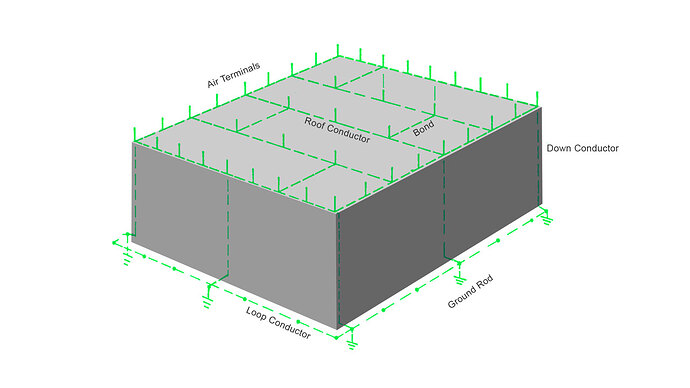Lightning strikes can cause significant damage to buildings, including fires, structural damage, and damage to electrical and electronic equipment. By installing a lightning protection system, the risk of damage can be greatly reduced, providing greater safety and protection for people and property.
The system works by providing a low-resistance path for the lightning current to follow, which safely diverts the current away from the structure and into the ground.
Lightning rods are placed on the highest point of the structure and are connected to conductors, which are designed to carry the lightning current to the ground. The grounding system provides a low-resistance path for the current to follow.
Lightning protection is used in conjunction with surge protection devices, which are designed to protect electrical and electronic equipment from damage caused by voltage spikes.
Conductor Types
Grounding electrodes are installed for the purpose of providing electrical contact with the earth which allows lightning currents to dissipate harmlessly. The National Fire Protection Association (NFPA) 780 Standard for the Installation of Lightning Protection Systems defines several different types of grounding conductor for lighting protection systems.
-
Bonding Conductor. (3.3.8.1) A conductor used for potential equalization between grounded metal bodies or electrically conductive objects and a lightning protection system.
-
Counterpoise Conductor. (3.3.8.2) A bare underground electrical conductor providing an area of protection from the effects of lightning for underground raceway(s) or cable(s).
-
Down Conductor. (3.3.8.3) A main conductor used to connect roof conductors to grounding electrodes.
-
Ground Loop Conductor. (3.3.8.4) A main-size loop conductor installed within 12 ft (3.6 m) vertically of the base of the structure to provide a common ground potential.
-
Loop Conductor. (3.3.8.5) A conductor encircling a structure that is used to interconnect grounding electrodes, main conductors, or other electrically conductive bodies.
-
Main Conductor. (3.3.8.6) A conductor intended to be used to carry lightning currents between strike termination devices and grounding electrodes.
-
Roof Conductor. (3.3.8.7) A main conductor used to interconnect strike termination devices.

